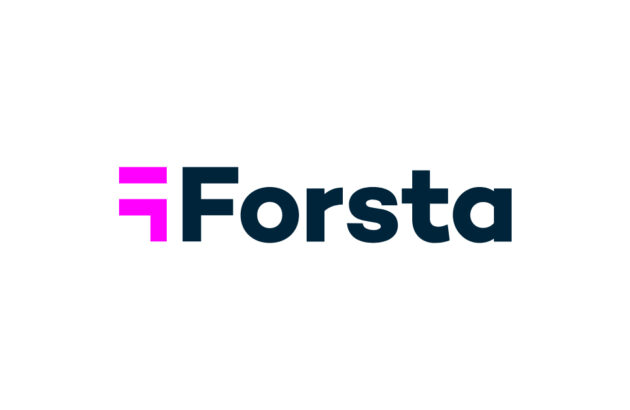What is customer feedback and why is it important?

What is customer feedback and why is it important
How do you know you’re doing everything you can to put your customers at the heart of your business? Simple… ask for customer feedback. Find out if your customer-centric efforts are worth the trouble and if they result in higher satisfaction and loyalty. Discover what’s really annoying to your customers and how can you resolve their issues to stop them leaving. Learn about what delights them and how can you make that work at your advantage. Without customer feedback, you’re flying blind. And it’s a matter of time before you face a storm… or worse. So read this article and find out:
- What is customer feedback?
- Why is customer feedback important
- Examples of customer feedback
- How to improve your customer feedback strategy
- How can Forsta help?
What is customer feedback?
To put it simply, customer feedback is the information and opinions that your customers tell you about what they think and feel about your products and services. This information can take many forms: a written response to an email survey, a video, a text via mobile…
Customer feedback needs to be relevant and timely so it can be used to get people within your organization to do the right thing. Knowing a customer is so annoyed they’re about to switch to your competitor is useful… but if you ask them about it a month after they’ve already switched, you might just confirm they took the right decision.
And it’s not just getting the feedback that needs to be relevant and timely… How you get the information in the right manner to the people who can act on it is equally important. It’s clear that you need to gather, analyze, visualize and act on your customer feedback to get the full story of your audience – their human experience. After all, it’s good to listen, but doing something to help the situation, that’s what separates the leaders from the rest.
Why is customer feedback important?
Customers know best what they need. Period. What they think about your brand can make or break your organization. So why exactly is customer feedback so important?
- Supplying the ‘why’
Understanding what your customers think and feel is key to explaining their actions. By asking them questions after key interactions, you’ll have a much better feel for the way they viewed their experience. Getting the ‘why’ behind your customers’ behaviors can ensure you make the right improvements, helping them along their journey. - Making your products and services better
A long-term goal for your company, no doubt! But how often do you make your customers an integral part of this process? The way they view what you sell should be at the center of your product development strategy. - Measuring customer satisfaction
“If you can’t measure it, you can’t manage it.” This quote attributed to management guru Peter Drucker says it all. A satisfaction or loyalty score like NPS or CSAT might not be the end goal of customer feedback, but it sure is a good start. And it will help you spot trends as your program evolves. - Engage with your customers
Asking customers for feedback is in itself a great way to engage with your customers… if you do it right (again, relevant and timely) and if you show you care about their opinions. Feedback can and should become part of your overall engagement strategy. - Decrease churn
Now we’re getting into the meat of it… Customer feedback can link directly to better customer retention. By doing what your customers are asking, and showing it improves their loyalty, the sky’s the limit! - Promote word of mouth
Turning positive customer comments into rave reviews has never been easier. So don’t just focus on rescuing unhappy customers, find ways to activate your happy ones into brand advocates. - Make better decisions
Last but not least… Customer feedback lets you put customers at the heart of everything you do. By taking the pulse of their thoughts and feelings when it matters, you have the power to make them part of your business decisions.
Examples of customer feedback
Customer feedback can take many forms, be sent through many channels, cover many interactions. Here are a few examples.
- Surveys
The most widely used feedback method… Surveys let you ask the questions you need to get your customers’ opinions when it matters, to them and to you. Through technology and common sense, surveys have evolved so they take less time and give you better insights. From online NPS questionnaires to web pop-ups to one-question mobile texts, surveys give you access to your customers where and when you need it.
Pros: Easy to set up and send out at specific interactions.
Cons: Response rates can be low, so follow guidelines to foster engagement.
Top tip: Make sure you ask a “score” question in your survey, like NPS (Net Promoter Score) or CSAT. - Digital diaries
Wonder what it would be like to spend the day with your customer? With digital diaries, you can do just that. Observe every action they take, step by step. See their world, through their eyes. Dive deeper into their lives than ever so you can really understand what they think or feel. Use tools like heatmaps to find out things your customers don’t even know.
Pros: You get deeper insights on how your customers use your product.
Cons: Information is collected one customer at a time, and does not always stand for your customer base as a whole
Top tip: Use this method to engage your top customers, those willing – and proud – to share their day with you. - Social listening
When angry, some customers don’t bother to call or fill in a survey. They go straight to Twitter or Facebook and won’t hesitate to slam your brand in public. And it doesn’t get more public than social media. So put in place social listening methods to find out what people are saying about you on social channels. That way you can address issues before they become viral, or amplify positive stories.
Pros: What you get is unbiased, unfiltered, raw feedback
Cons: What you get is unbiased, unfiltered, raw feedback… Yes, it works both ways.
Top tip: Put the right people and processes in place to respond quickly to social feedback. There’s a right way to “talk” on these channels – no corporate speak there! - Focus groups
One of the more traditional methods of getting in-depth information about what customers think of you and want from you… But they’re hardly traditional these days. Digital focus groups became really popular during the pandemic and offer virtual features that make them even more powerful (drawing tool, extensive video chat…). They’re now the natural extension of surveys, when you need to go below the surface.
Pros: They let you dive deeper into survey responses.
Cons: They can be quite expensive and time-consuming.
Top tip: Pay attention to which customers you put together in a room, digital or face to face. You’ll get much more from your focus group if they feel they’re among like-minded individuals.
How to Improve your customer feedback strategy
So where do you start? Just choose a feedback method and that’s it? Well, not quite. That’s how many customer feedback programs get off the ground… and how they come crashing down a few months later. So how do you improve your customer feedback strategy? Here are 7 pointers to get you on your way.
- Define your goals
And no, getting feedback from customers doesn’t qualify as a goal. What you need is a SMART goal (strategic, measurable, achievable, relevant and timely). Something like: “we want to decrease customer churn by 5% in the next two years”. Many strategic goals depend on customer feedback as a data point: increasing cross/up-sell, decreasing cost-to-serve… Use them to define what it is you want to achieve with your feedback program. - Select the right metric
Some people will tell you metrics don’t matter. But that’s not quite right. There are right metrics and wrong ones… for YOUR business, for YOUR goals. So, spend time researching the metric that will work for you. Start with the goals you defined earlier, and make sure your customer satisfaction metric links to this, directly or indirectly. - Understand who needs to know what
Again, that step is often missed at the start of the program. People dive right into getting feedback without thinking of what information needs to go to which people within the organization. Not only is this important so you can correctly set up your reporting, but also because it’s likely to tell you what you need to know, and what feedback to collect. - Pick the feedback method
We mentioned some examples above… You need to pick the ones that will tell you what you need to do to improve things, not just give you data. A combination of two or three methods – or more – is usually best to get to that point. Bear in mind it pays to be consistent, when spotting trends, expanding the program, etc. So, think carefully at the start. - Stop asking what you should already know
Yes, it’s easier to ask a customer what they bought in the last three months than to find that out for yourself. And no, that’s not an excuse. Your customers don’t have the time to tell you stuff like that, and you’re not showing them respect if you ask them. So, bring in data from systems that have the right info. Bit of an effort at first, but it will pay dividends as you can apply these integrations across all customers and get higher response rates in the process. - Close the loop
So, you’re now listening to your customers… Now what? Well, now you have to do something with that feedback. And you can start with closing the loop and letting customers know you heard them. That means resolving issues and escalating complaints. And for promoters, that means a thank you, and maybe an opportunity to turn their comments into reviews. - Make improvements across the business
Closing the loop has a short-term ring to it… But customer feedback holds the power to resonate well into the future. Use it to infuse all your business decisions, giving your customers prime position in your organization. So, their voice can help to guide the way you do business, day in, day out.
“The combination of Forsta’s data integration capabilities and advanced reporting means that we can pinpoint the actions that will really make a difference to customers – and we see the results on a daily basis.”
Michael Harris
Head of Customer Research, Virgin Money
How can Forsta help?
Wonder how you can do all this successfully? Forsta can get you there. We have the technology, services and tools to help you put together a customer feedback program quickly and easily.
Use our tech to the max to speak to your customers through any channel, any method, any language.
Turn their voice into knowledge and insights through advanced analytics. Let their feedback become part of your organization, sit at the board table, influence your business decisions.
With Forsta you can break down the walls between customer feedback and research. Between the qualitative and the quantitative. So, you can move beyond data and see the human beings behind them.
With Forsta by your side, you can focus on what really matters: more customers, higher revenues, lower costs. And of course, standing out from your competition.
Conclusion
Wait no longer. Get customer feedback to change your business for the better. Let in the customers, spread out the insights and power up your transformation.
“The demands we face are constantly evolving. Every client has their own unique set of needs … Forsta has shown they are willing and capable of rising to whatever challenges we have presented … Other tools tend to focus either on the visual, or the data processing nuts and bolts. With Forsta you have both in one box.”
Patrick Diamond
Managing Director, Yonder Data Solutions
Related resources
Research HX
Many feedback programs measure Net Promoter Score movements, but few can reveal the “why” of customer behavior. Forsta’s HX Benchmarks puts performance in context so you can understand what great experiences look like for your customers. Learn more about the human-centered intelligence you need to outperform the market.

AI and the new era of customer experience: Insights for 2025 and beyond
AI and the new era of customer experience: Insights for 2025 and beyond Webinar synopsis: In today’s fast-paced digital landscape, customer experience (CX) is the ultimate differentiator—and AI is rewriting the playbook for how businesses connect with their customers. Tune in to an engaging session that blends cutting-edge thought leadership with actionable strategies to elevate […]

Integration: the new frontier of insights for research HX
Integration: the new frontier of insights for research HX Webinar synopsis: Discover the faster, smarter and more accurate way to research with Research HX. Gone are the days of sequential processes skipping between platforms. Parallel workflows, integrated steps and AI enhancements to the tools you use daily. Related resources

Learn more about our industry leading platform
FORSTA NEWSLETTER
Get industry insights that matter,
delivered direct to your inbox
We collect this information to send you free content, offers, and product updates. Visit our recently updated privacy policy for details on how we protect and manage your submitted data.